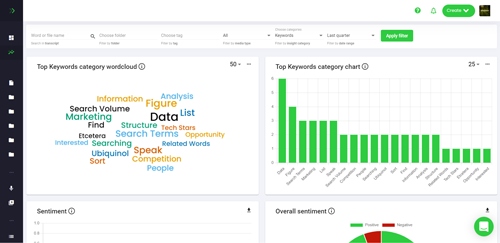Word2vec Vs GloVe: Comparison of Different Natural Language Processing Techniques
The world of natural language processing (NLP) is full of different algorithms and models that can be used to process text. Word2vec and GloVe are two of the most popular techniques for understanding natural language. Both algorithms have their own strengths and weaknesses, and so it is important to understand the differences between them in order to choose the best one for your application.
What is Word2vec?
Word2vec is a technique used to represent words in a vector space where words that share similar contexts are placed close together. It was developed by Google in 2013, and is one of the most popular NLP techniques. Word2vec works by taking a text corpus and transforming each word into a numerical vector. The vectors are then used to represent the words in a model.
What is GloVe?
GloVe is an algorithm developed by the Stanford NLP group in 2014. It stands for Global Vectors for Word Representation. GloVe is a word embedding algorithm that uses global matrix factorization to create word vectors. It takes a text corpus and creates a co-occurrence matrix, which is used to create word vectors.
Differences between Word2vec and GloVe
Training Process
The most notable difference between Word2vec and GloVe is the training process. Word2vec uses a shallow neural network to create vectors, while GloVe uses a global matrix factorization technique.
Data Requirements
Word2vec requires a large amount of training data, while GloVe can be trained on smaller datasets. This makes GloVe more suitable for smaller tasks, while Word2vec is better suited for larger applications.
Vector Representation
The vector representation of the words is also different between Word2vec and GloVe. Word2vec creates vectors that represent the context of words, while GloVe creates vectors that represent the co-occurrence of words.
Computational Complexity
Word2vec has a higher computational complexity than GloVe, which makes it slower to train. On the other hand, GloVe is faster to train due to its simpler algorithm.
Conclusion
Word2vec and GloVe are two of the most popular NLP techniques. They have different strengths and weaknesses, and so it is important to understand the differences between them in order to choose the best one for your application. Word2vec is better suited for larger applications, while GloVe is more suitable for smaller tasks. Word2vec is slower to train due to its higher computational complexity, while GloVe is faster due to its simpler algorithm. Ultimately, the choice between Word2vec and GloVe depends on the application.



